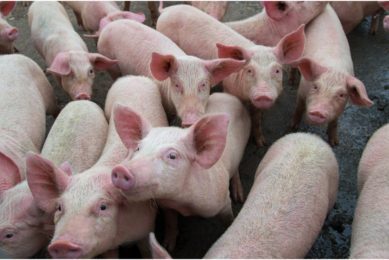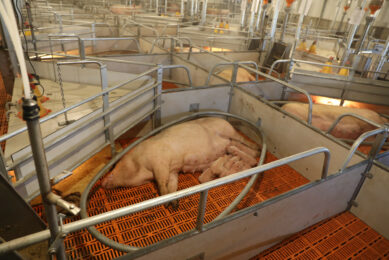How to improve pig diet quality by using enzymes – part I
Non-starch polysaccharides, like beta glucans and arabinoxylans, generally reduce the nutritive value of cereals and of diets. Enzyme preparations can be used for this purpose, but are not always useful. In two episodes, I shall deal with these matters.
| |
All cereals currently used in practical pig diets contain non-starch polysaccharides, with the most prevalent being beta glucans and arabinoxylans.
These anti-nutritional factors reduce the nutritive value of cereals and of the diets into which they are incorporated. Not only their digestibility is usually less than 50% (compared to over 90% for starch and sugars), but also their presence in the gastrointestinal system reduces the digestibility of other nutrients in the diet.
Bacteria overgrowth
A high level of non-starch polysaccharides also contributes to hind gut overgrowth of bacteria and it could also upset intestinal health, leading to dysentery and general diarrhoea.
Thus, in commercial pig nutrition the presence of high levels of non-starch polysaccharides is generally considered undesirable and the most effective method of countering their negative effects today is the use of specific dietary enzyme preparations that enhance the digestibility of these anti-nutritional factors.
Of the most common cereals used, wheat and barley are the most likely to benefit from enzymatic intervention.
Oats and rye
Although other cereals, such as oats and rye, are also rich in non-starch polysaccharides, their use in pig diets is either local or limited; but, nevertheless, the same principles outlined below are also applicable for these cereals.
In contrast, more common cereals such as maize, rice, and sorghum usually do not benefit from enzyme supplementation because they contain relatively low levels of such anti-nutritional factors.
Barley and wheat
It should be noted here that in pigs the use of dietary enzymes in barley- or wheat-based diets does not always confer positive effects in terms of enhanced growth performance and/or feed efficiency.
This is due to the fact that the concentration of non-starch polysaccharides varies widely depending on cereal, variety, batch, region, and even growing conditions. The level of non-starch polysaccharides is the highest and varies the most in barley, ranging from 11 to 19%, with beta-glucans comprising 3 to 9%.
Thus, not all cereals should benefit the same from enzyme supplementation.
Australian study
For example, studies conducted in Australia clearly demonstrated that enzyme supplementation is more likely to benefit cereals of low quality (that is, those high in non-starch polysaccharides) instead of cereals with an average to low level of such anti-nutritional factors (Cadogan et al., 2000; see graph).
To be continued on Thursday. Please come back to visit www.PigProgress.net.











